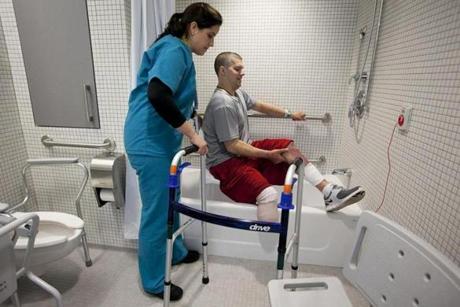ERI SPEAKER PROFILE:
[caption id="attachment_1210" align="alignleft" width="198" caption="Lezlie Adler"] [/caption]
[/caption]
LEZLIE ADLER, MA, OTR, FMOTA,C/NDT
Lezlies course are always well received, and she is one of our popular speakers. She is an internationally recognized and respected clinician and consultant with extensive and broad experience in medical, educational and community based settings. As a pediatric occupational therapist in schools, hospitals, outpatient clinics, homes, community organization and nursing homes for children, she offers a unique approach which can be practically and successfully applied in all settings. She is an enthusiastic presenter who offers insightful information beneficial to the entire team. Since 1976 she has conducted over 300 seminars throughout the United States, Europe, Asia, Australia, New Zealand, North America, South America, Central America, Canada and the United American Emeritus on a large variety of topics related to children and families, bringing her energy and passion regarding therapeutic strategies and functional treatment.
Lezlie provides a wealth of information, repeatedly supplementing it with clinical application. She is a skilled teacher that welcomed questions throughout.-Lisa Merritt
Lezlie is a dynamic teacher who takes difficult material and makes it so practical.
-Susan Oh
Lezlie is fabulous. Her wealth of information, true love of play, and devotion to her clients is very inspiring. I love her sense of humor. – Patricia Blackburn
Lezlie Adler was an excellent presenter providing a wide variety of examples to help every discipline within a variety of different situations. I would recommend this course to all disciplines to help continue their education and help them grow as clinicians. Overall Lezlies course was full of energy and education. – Jason Alon Weigold
This is the second class I have taken with Lezlie. She is very dynamic, fast-paced and full of such wonderful, practical ideas! What a talented therapist who is able to combine all 3 disciplines into a great relevant course – Glen Neil
Please click on the links below to view the multiple locations offered for each of her dynamic courses and to print a brochure:
“Integrating NDT, SI and Motor Learning Perspectives in Pediatrics” “Linking Play to Function: Utilizing Neurodevelopmental and Sensory Integration strategies to Facilitate Functional Skills Through Play” “Combining NDT and SI for Optimal Function in Children with Neuromotor Challenges”
]]>

 Occupational therapist helped Marathon bombing victim. Yoon S. Byun/Globe staff[/caption]
Occupational therapist helped Marathon bombing victim. Yoon S. Byun/Globe staff[/caption]